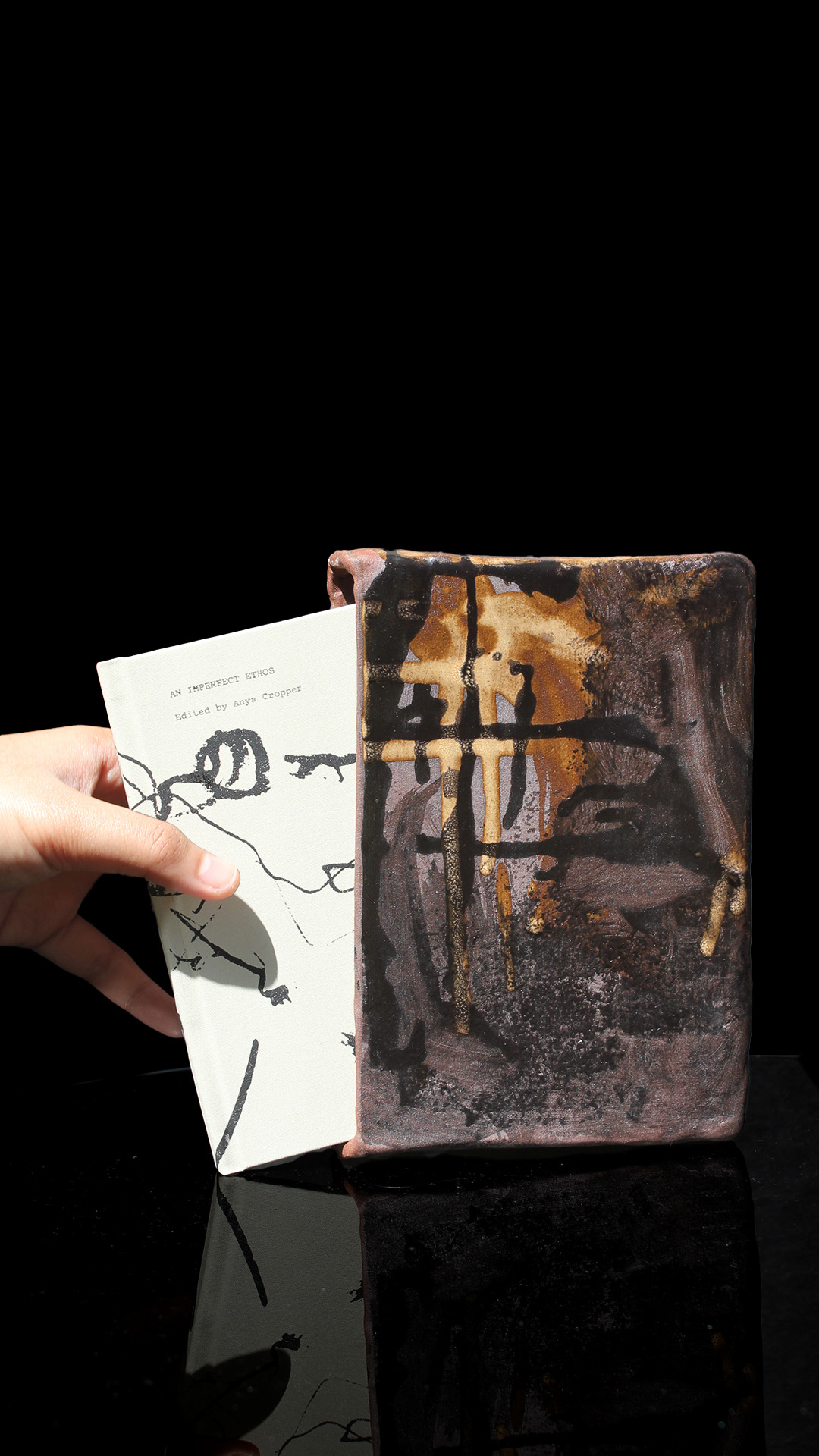

Anya Cropper
The Beauty of Imperfection
anyacropper@gmail.com
Finding joy and value in imperfections, mistakes and failures
Reframing imperfection as valuable is integral to breaking down barriers in the creative process. The Beauty of Imperfection aims to democratise imperfect making by encouraging others to actively participate in creating in a way that reframes imperfections as valuable. The collateral comprises three books inside a clay slip case, 'An Imperfect Ethos', ‘How to Create Imperfectly’ and ‘An Imperfect Sketchbook’, aiming to spread the gospel of imperfection with joy and kindness.
Reframing imperfection as valuable is integral to breaking down barriers in the creative process. Though failure and imperfection has been valued at art schools for a long time, it is often only accessible to the privileged few. The Beauty of Imperfection aims to democratise imperfect making by encouraging others to actively participate in creating in a way that reframes imperfections as valuable. It aims to spread the gospel of imperfection in creativity with patience, joy and kindness.
The collateral comprises three books inside a clay slip case, 'An Imperfect Ethos', ‘How to Create Imperfectly’ and ‘An Imperfect Sketchbook’. The first book acts as a manifesto of imperfection, mistakes and failure; celebrating analogue making that disrupts the digitally produced perfectionist norms. The second book is a how-to guide for recovering perfectionists, with open ended instructions that encourage creativity and interpretation. The third book is a sketchbook with no blank white pages, with the explicit instruction not to create anything perfect inside.
During my discussions with people that do not occupy either the art or design spheres, they were invigorated by the idea of imperfection. They delighted in the idea that they could be given permission to undertake creative tasks without the expectation that they would immediately create perfect outcomes. They echoed similar sentiments about the rigid, perfectionist way we are taught to create in school.
Often as designers in particular, we strive for perfection in response to a capitalist desire for profitable creative processes. Unlearning our perfectionist tendencies can been challenging throughout the design process. Our first instinct is to fret when things are misaligned, cracked or smudged. Retraining our aesthetic taste to see the value and beauty in imperfection takes considerable conscious effort. Therefore, I argue that to appreciate and embrace failure, mistakes and imperfection in making is a radical act.




